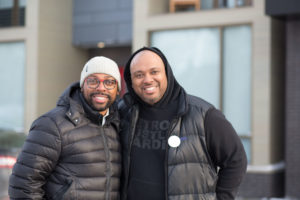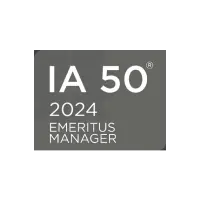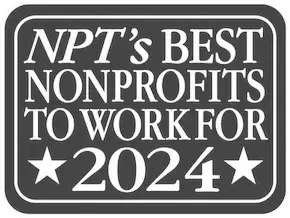Centering Equity and Our Civil Rights Roots in 2020 and Beyond
By Ellis Carr, President & CEO
Throughout the year, I have thought a lot about what equity means to me and the work we do at Capital Impact.
At its most basic, dictionary.com defines “equity” as “the quality of being fair or impartial; fairness; impartiality.” A second definition goes deeper still: “the application of the dictates of conscience or the principles of natural justice to the settlement of controversies.”
America has such a strong desire for fairness. It is often one of the first fundamental principles taught to us children in school, if not before. Yet, fairness – equity – is so distant from the lived experiences of many people in this country, people for whom the system was never set up to be fair. Indeed, for people of color, our nation’s systems were set up to be exactly the opposite.
Almost from our beginning, inequity – truly, exploitation – has made this nation what it is today. In fact, historians Sven Beckert and Seth Rockman said that “American slavery is necessarily imprinted on the DNA of American capitalism.” Since then, from redlining and unequal distribution of the G.I. Bill, to “stop-and-frisk” and predatory home loans, policies and attitudes implemented and espoused by this nation have been incredibly damaging to communities of color. The narrative of “pulling oneself up by the bootstraps” is simply not valid when policies have held people back from achieving success.

Barriers for returning citizens like Juan and many others can be high. CDFIs were made to create opportunity for Juan and anyone who finds structural barriers in their way.
As a Community Development Financial Institution, our mission is to break down the barriers that communities experiencing historical disinvestment find between themselves and their goals. We see how systemic racism and disenfranchisement have crippled the chance to thrive for members of the communities that we serve. Knowing how these barriers keep families from attaining the generational wealth that is the gateway to equity, Capital Impact Partners is focusing on integrating equity more deeply within both our strategy and the very framework of our organization.
Every day, we see the need for equity as a central element of the work that we do alongside our neighbors and partners. While community development does give disinvested communities access to crucial social services, we realize that the central premise of equity needs to be tied to every strategy and project implementation. Community development done without this lens will not solve the root problems that have created poverty and injustice in this country. We need to acknowledge that racism and prejudice are two significant factors in supporting the long-standing narratives of how so-called “struggling communities” are portrayed.
A Mission-Driven History of Fostering Equity: Community Reinvestment Act
Sadly, the struggles we face are not just historical, but rather are facing us today.

Investing in communities that experienced historical disinvestment breaks barriers to opportunity. The Community Reinvestment Act created CDFIs to do just that.
Take, for example, the current state of the Community Reinvestment Act of 1977 (CRA), which was established to encourage depository institutions to help meet the credit needs of the communities in which they operate, especially communities that are largely composed of people of color who have been historically ignored or subject to predatory financial practices. The principle behind this important regulation is simple: The relationship between financial institutions and communities should be symbiotic and not extractive.
A joint proposal for modernizing CRA regulations was submitted this year by the Federal Deposit Insurance Corporation (FDIC) and the Office of the Comptroller of the Currency (OCC) – two of the bodies charged with enforcing CRA. The proposal, however, leaves significant loopholes that would allow private banks to meet their CRA requirements (which then allows them to grow their business) without actually expanding economic opportunity for historically disinvested communities. Indeed, the loophole allows banks to ignore many so-called “risky” regions completely. It is a classic scenario we have seen too many times before that will only increase the chasm between the haves and the have-nots.
It should be noted that the Federal Reserve, which usually works in tandem with the FDIC and OCC on CRA regulations, has decided to issue its own proposal.

Capital Impact is still driven by its mission to expand community development through investment in what our neighbors identify as their needs. We continue to work in partnership with communities and organizations to achieve equity and inclusion.
Since the point of CRA was to create economic opportunity for disinvested communities – often communities of color and communities experiencing economic hardship – we find the proposed “modernizations” unacceptable. The communities that we serve have seen year after year of disinvestment from financial institutions, and now is not the time to walk back the gains that have been made and leave communities without the opportunities that they deserve. Along with our CDFI partners, we intend to advocate to uphold the original intention of the legislation, without which we set our communities back even further. We encourage each of you to visit the websites of these regulatory bodies and provide your own comments as well.
Have We Become more about Metrics than Impact?
This trend of the financial sector drifting away from the communities they serve is something I have been reflecting on a lot this year as Capital Impact’s CEO.

CDFIs were created to take risks on communities that traditional financial institutions deemed “too risky.” Therefore, social impact has to be measured by more than loans dispersed and buildings constructed.
It is important to realize that the creation of CDFIs was another important outcome of the CRA. The purpose was to have financial institutions driven by mission over profits and focus on disinvested areas that traditional lending institutions deemed (and often still do) too risky to finance; in fact, we are mandated to embrace risk in order to create social impact.
We have done great work over our history in helping ensure access to social services. But it is important to ask the question: “Is it enough?” Are we relying too much on metrics like “loan disbursements” or “health centers created” to measure success?
Across the country, the economic inequality chasm continues to grow. The hashtag #LivingWhileBlack has gone viral. Gentrification is displacing long-established communities at a faster rate than ever before. Federal policies continue to be discriminatory.

The needs of communities are as great as ever. Now is the time to focus on supporting economic, social, and racial justice that will help communities thrive.
It is not that we should stop the work we have been doing. It is that we must be more thoughtful and deliberate about what we do next. Our work has to evolve to address key issues of economic, social, and racial justice.
We have just begun to make that shift here at Capital Impact, and we have done that first by looking inward at who we are and how we operate as an organization.
Mapping Equity to Our Corporate Culture
To advance transformational impact with the communities we serve, we are working with The Justice Collective (TJC) to do a complete evaluation of our organization for how well we model the principles of Diversity, Equity, and Inclusion (DEI). With TJC, we are creating an Equity Roadmap, an equity-centered strategic plan for the organization.

To begin our journey, our staff, board, and partners expressed their commitment to holding diversity, equity, and inclusion at the center of our mission and work.
The most important place for us to begin was with our staff, board, and community partners. Having everyone on board for this journey is crucial to its success, and that requires ensuring everyone has a voice and is engaged in the process. Core to that effort was an independent survey we conducted with our colleagues. We heard some things we were doing well. We heard some things we could be doing better. And quite frankly, we heard some things that made us uncomfortable. But it is in that discomfort that we feel real change can occur.
After several weeks of evaluation, TJC has developed a comprehensive set of recommendations for how we can better embed DEI into our mission, operations, organizational structure, and strategy. We are also working with TJC to create an Equity Statement that will serve as our North Star for a road map and equity-centered strategic plan that will guide us into 2020 and behind.
We have also been having external conversations and interviews to get another perspective on how we are currently performing. I had great conversations with sector colleagues at both the OFN and SOCAP conferences this year, where we spoke frankly about what is needed to get us all closer to the vision that was formed out of the civil rights movement.
Of course, those conversations are ongoing and I hope to continue them with my sector colleagues and others.
Our Way Forward

Our Equitable Development Initiative is creating opportunities for real estate developers of color to participate in booming real estate markets across the country, which they historically have not been given access to resources to do.
Building on our strong lending efforts, we are seeing more opportunities and engaging in initiatives that dive deeper into expanding equity. Our Equitable Development Initiative and Entrepreneurs of Color Fund are examples of actions that we can take to get there. Already, we are using learnings from these programs to further improve how we engage with our communities. This includes developing a lending product specifically tailored to developers of color who have long found themselves unable to get financing through traditional channels to scale their businesses.
Moving away from old modes is difficult, but at times necessary. In the case of equity – true equity – we feel that it is the only way to build power within our communities so that they can achieve their dreams.
We are committed to ensuring that Diversity, Equity, and Inclusion are at the heart of our work, both internally and externally. We are at the beginning of a journey that we hope will be transformative for us as an organization and our sector as a whole. As we continue to learn, we will share our journey and progress with you.
Thank you for collaborating with and supporting us this year, and I look forward to more partnerships and impact in the year to come. Happy New Year!






